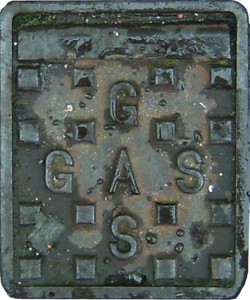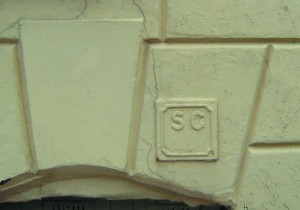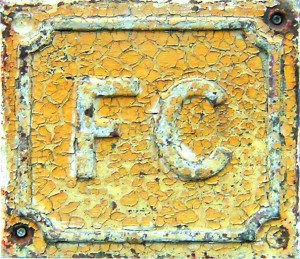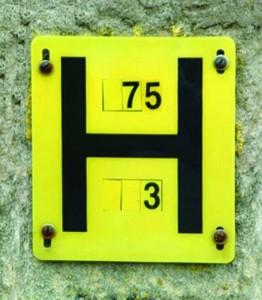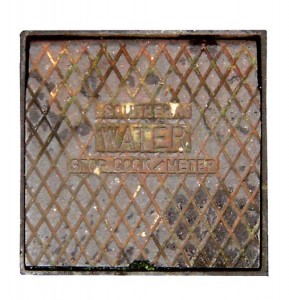A BRIEF HISTORY OF BOHEMIA – PART 9 – History beneath our feet – by local historian Edward Preston
Pavements can provide some interesting history lessons, for it is there that we can see evidence of many of our public services. The streets in Hastings were paved in 1821. Since Bohemia developed largely in the latter part of the 19th century, provision of pavements would have been standard practice. However, even paving stones can tell a story; not that Bohemia was ever paved with gold.
Until fairly recent times, a pavior mason would have been skilled to cut paving stones, simply using a cold chisel and a hammer. Then by etching a line across the slab could snap it into two, rather like cutting glass, with no fuss. Nowadays electric circular saws are used, producing clouds of dangerous dust.
Some very early paving stones were indeed stone slabs, but mostly they are made of composite materials, sometimes incorporating hair to add strength, like bricks containing straw. Kerb stones were invariably granite, and most in Bohemia still are, though modern replacements are usually concrete. In many parts of Bohemia, paving stones have been replaced by asphalt, which looks fine when laid, but soon becomes grotesque with trodden-in chewing gum. At bus stops, kerbs and pavements are being raised to allow easier boarding and alighting for passengers. At street corners, we now have the objectionable so-called tactile paving and lowered kerbs. This provides easier access for wheelchair users, but can be painful for pedestrians to walk across. The old cast-iron channels conveying rainwater from drainpipes to the gutter, which invariably lasted for more than a century, are generally replaced with inferior light-weight grills which buckle and can be hazardous.
Gas lighting came to Hastings in January 1831. Again, this meant that Bohemia would have had gas supplies laid on both for street lighting and for domestic use. Some of the cast iron inspection covers set in pavements have the word ‘GAS’ [picture]; others have the initals S.E.G.B. in the corners, indicating South Eastern Gas Board. The 1873 Ordnance Survey map indicates that some houses in Bohemia had wells for domestic water supply; but piped water was available for most premises. Variations in the cast-iron inspection covers make this an interesting study, both in the lettering: e.g. H.W.W., H.C.W.W., S.W. etc, being the initials of the service provider at the time; and in the method of opening, some being hinged, others via a key hole.
There are also some plates bearing the intials: S.C. [picture] meaning ‘stop cock’, and some have the more politically correct: S.V. meaning ‘stop valve’. These are usually on walls just above pavement level. F.C. may also be found [picture], meaning ‘fire cock’, and occasionally F.P. meaning ‘fire plug’*, although there do not appear to be any F.Ps. in Bohemia.
More commonly, the letter H will be found, referring to a fire hydrant.
These all have two figures: the upper being in inches giving the diameter of the valve for connecting the fire hose; the lower figure in feet stating the distance from the actual hydrant. These are now being given in mm and metres as new signs appear [picture].
Water supply is closely connected with drainage, so we also find considerable variations in drain covers in the gutters. So far, these appear to remain in cast iron, unlike some of the plastic covers used for many other services. Besides these, there are also electricity and telephone chamber covers as well as coal hole covers. These will be considered in the April Voice.
*The concept of fire plugs dates to at least the 1600s. This was a time when firefighters responding to a call would dig down to the wooden water mains and hastily bore a hole to secure water to fight fires. The water would fill the hole creating a temporary well, and be transported from the well to the fire via bucket brigades or, later, via hand-pumped fire engines. The holes were then plugged with stoppers, often redwood, which over time came to be known as fire plugs.
Leave a Response
You must be logged in to post a comment.

